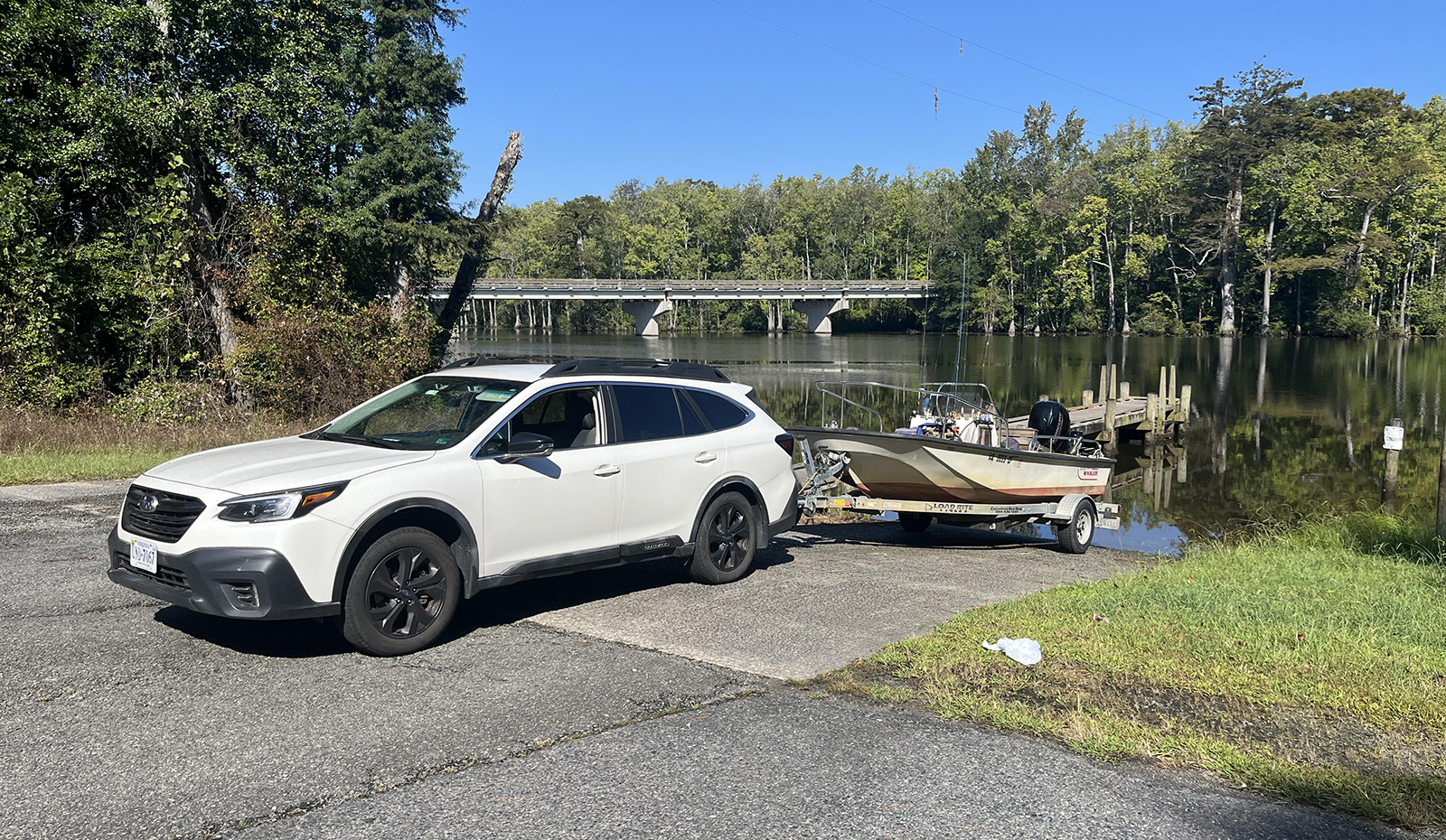Exploring the Lower Nottoway River from General Vaughan Bridge
By John Page Williams
Photos by John Page Williams
It’s a surprise to learn that the Nottoway River is 155 miles long. Tucked away in Virginia’s Southside region, it rises in a dense forest of the Piedmont on the eastern edge of Prince Edward County and flows through an intricately winding channel southeast between forest and farmland of the coastal plain to the North Carolina state line. There, it joins the Blackwater River to form the Chowan, headed for Albemarle Sound. Its headwaters flow over rocks, its lower reaches through deep bottomland cypress swamps. Diverse fishing opportunities range from smallmouth and Roanoke bass upriver to largemouth bass, bluegills, blue catfish, bowfin, and, in season, shad and striped bass in the lower river. Many road crossings offer Virginia Department of Wildlife Resources (DWR) access, upriver for paddlecraft and downriver for outboards.
The General C.C. Vaughan, Jr. Bridge, named for a local business, military, and civic hero, is the southernmost road crossing over the Nottoway, just four miles above its junction with the Blackwater. DWR’s General Vaughan Bridge landing with two-lane launch ramp lies immediately southeast of the bridge, just off Route 258. In early fall, my friend Kendall Osborne joined me to scout the river just above and below the bridge.

The winding Nottoway here is noticeably broader and more powerful than it is at the Hercules ramp 12 miles upstream (though only six miles as the goose flies), where Kendall and I meet each year in late March to fish for American and hickory shad. On this September day, we first ran downriver for three miles, noting that the channel’s last 600 yards curve into North Carolina before returning to the state line at the junction with the Blackwater/Chowan. This stretch is deeply wooded, with only two private landings and a waterfront community of several dozen houses just above the junction. Each has a long, buoyed no-wake zone, as do a couple of private landings upriver of General Vaughan’s bridge.
Next, we explored upriver of the bridge for several miles. Other boat traffic included several bass boats. No surprise, as this river is loaded with habitat: cypress knees, fallen trees, and lily pad beds. In order to perform a short “resource assessment” (our joking term for fishing), Kendall picked up a vintage, seven-foot fiberglass fly rod with a “bream bug” (foam rubber spider) while I poled the skiff into a backwater. Sure enough, short casts around the cypress knees provoked multiple strikes from bluegill.
I put down the pushpole long enough to pick up a redear sunfish (shellcracker) with a float ‘n fly fished on a two-foot leader from a light spinning rod. DWR’s writeup on fishing the Nottoway confirms that working the pad beds in the river’s lower reaches can produce good catches of these strong panfish that favor snails and other foods living around the stems of the pads.
The options for casting for larger fish are limitless, between the Nottoway’s cypress knees, fallen trees, and lily pad beds. Crankbaits, spinnerbaits, bladed jigs, and Texas-rigged soft plastics should all produce. My choice for this trip was a gold, weedless spoon, cast into pockets in the pad fields and worked back over the leaves, allowing it to flutter down when it dropped from them. As it flickered off the outside edge of a pad along the channel, something ate it and took off, pulling a little bit of drag.
Bass? No, the way the fish swam felt like it had some body length. Bowfin? Maybe, but probably not heavy enough. No great surprise, then, when a 22-inch pickerel appeared beside the boat, with the gold spoon clutched in its toothy jaws. It lay in the net long enough for a photo before a quick release.

Reluctantly, we headed home. We’ll be back again, yes for shad in March, but maybe in January to see it we can jig up a striper or two and in May to work those pad fields more thoroughly for bass.
John Page Williams is a noted writer, angler, educator, naturalist, and conservationist. In more than 40 years at the Chesapeake Bay Foundation, Virginia native John Page championed the Bay’s causes and educated countless people about its history and biology.
Legal Disclaimer:
EIN Presswire provides this news content "as is" without warranty of any kind. We do not accept any responsibility or liability for the accuracy, content, images, videos, licenses, completeness, legality, or reliability of the information contained in this article. If you have any complaints or copyright issues related to this article, kindly contact the author above.
